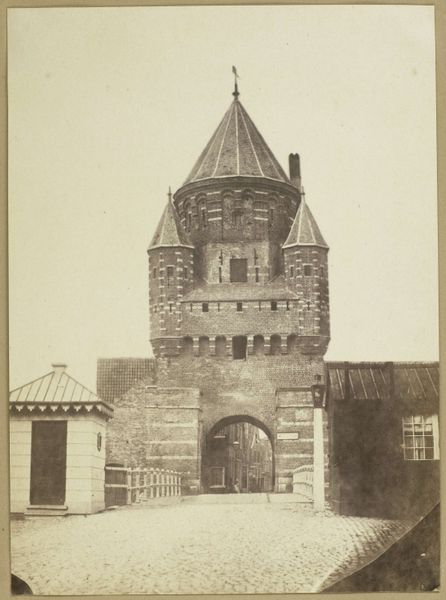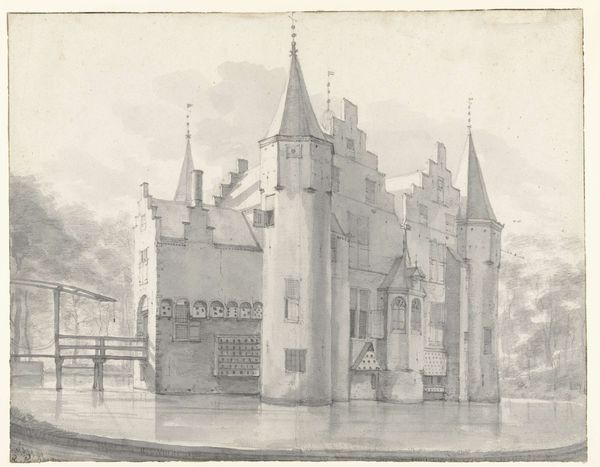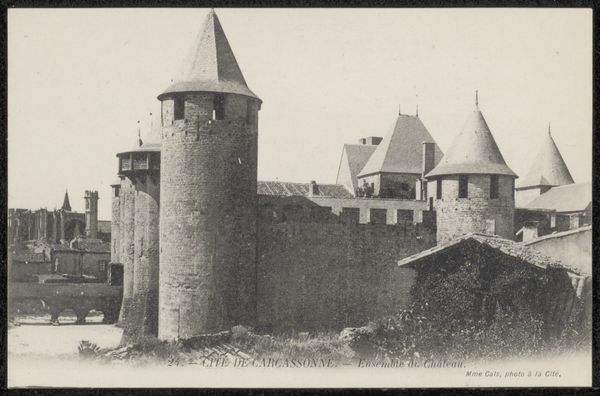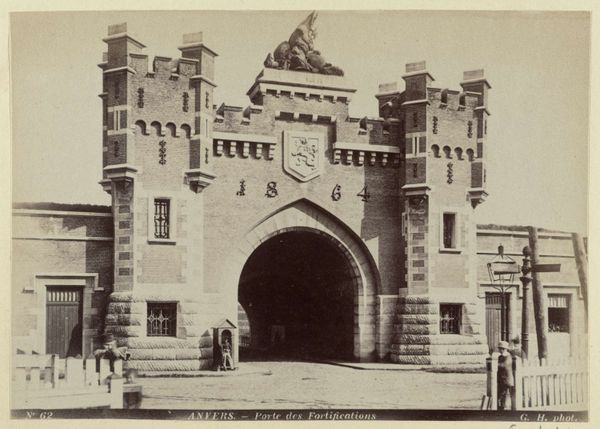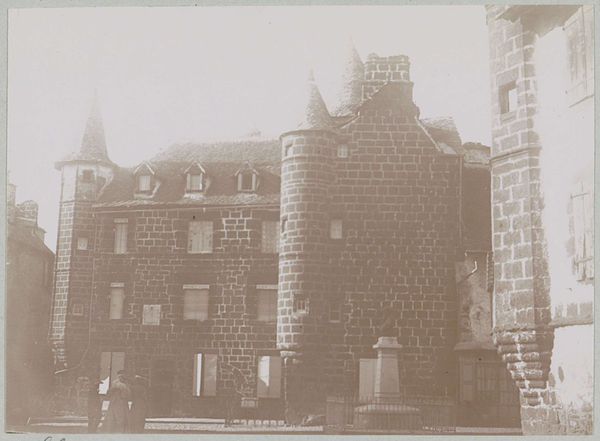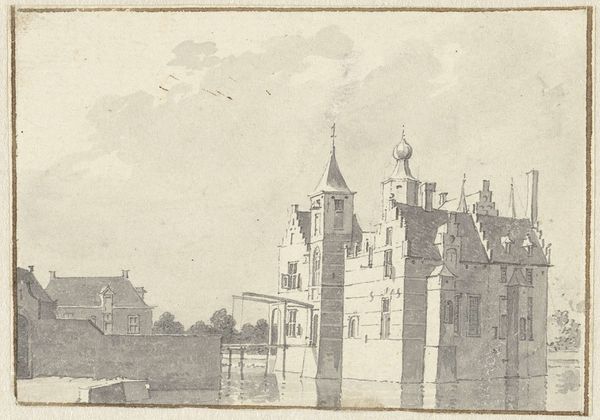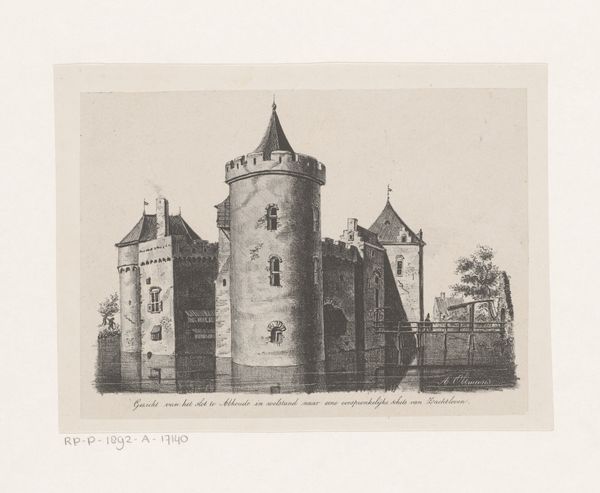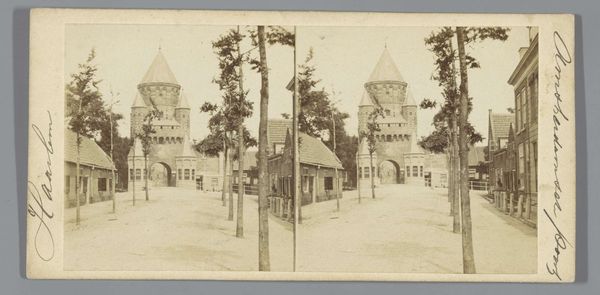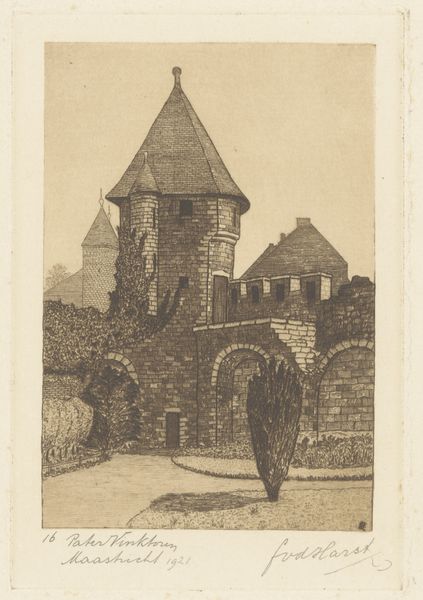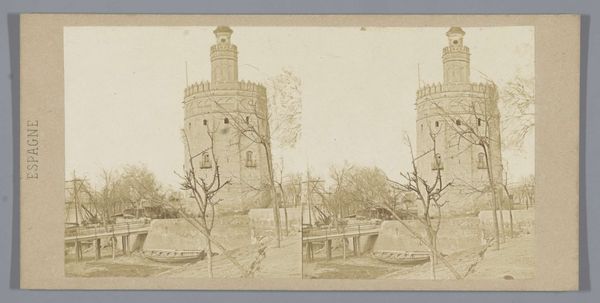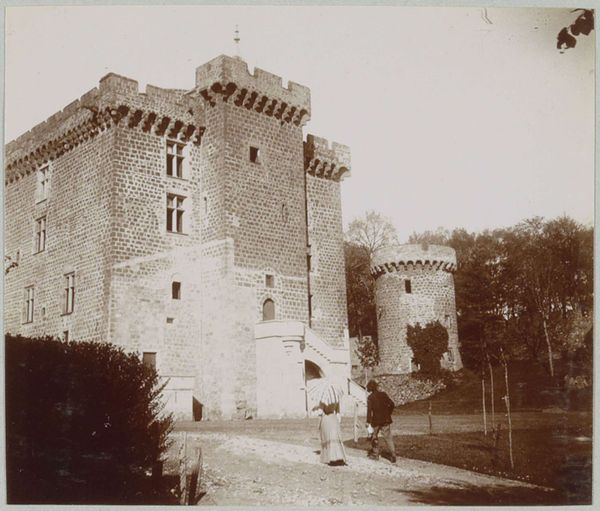
Gezicht op de Kleine Houtpoort in Haarlem, gezien vanaf de Kleine Houtweg 1858
0:00
0:00
Dimensions: height 84 mm, width 166 mm
Copyright: Rijks Museum: Open Domain
This stereoscopic image of the Kleine Houtpoort in Haarlem was made by Charles-Henri Plaut using the wet collodion process. It's a technique involving coating a glass plate with chemicals, exposing it in a camera, and then developing it immediately. What’s fascinating about this process is the immediacy it demands, but also the reproducibility it offers. The slightly sepia tone comes from the silver compounds used to capture the image, giving a warmth and depth that’s quite distinct. Plaut, like many photographers of his era, was not just an artist but a technician, deeply involved in the chemistry and mechanics of his craft. Photography in the 19th century was a blend of art and industry, mirroring the rapid technological and social changes of the time. Images like these made places and monuments widely accessible, fueling both tourism and a sense of shared cultural heritage. It blurs the line between documentation, artistic expression, and commercial enterprise.
Comments
No comments
Be the first to comment and join the conversation on the ultimate creative platform.
